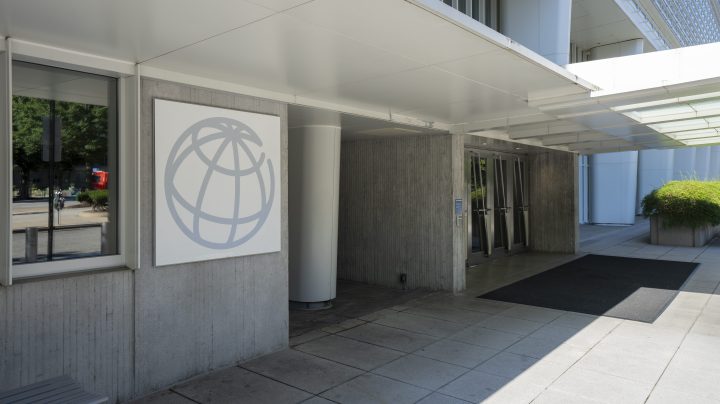
Why is Latin America’s economy lagging in its pandemic recovery?
Why is Latin America’s economy lagging in its pandemic recovery?

Many economies in Central and South America have lagged behind the rest of the world in recovering from pandemic. The World Bank has directed billions of dollars to help the region’s economies bounce back.
This week on our series “Barriers to Entry: The Cost of Crossing the Southern Border,” we’re examining multiple forces — especially economic forces — shaping migration. William Maloney, chief economist for Latin America and the Caribbean at the World Bank, spoke with “Marketplace Morning Report” host David Brancaccio about what the current economic situation in Central and South America means for employment and migration. The following is an edited transcript of their conversation.
David Brancaccio: Now as the world faces inflation, interest rates have moved higher. And that’s not helping Latin America, but it’s not helping really anywhere in the world. Why is Latin America lagging during this post-pandemic phase?
William Maloney: In the medium term, there are about four things that drive Latin American growth. One is exactly what you just mentioned, which is interest rates, which are plateauing a bit right now. But commodity prices enter, and they have been falling. Growth in the G7 is critical, and that’s been rather slow. And then growth in China is really uncertain. And all those things in the short run dictate that Latin American growth is going to be rather slow. The bigger concern for us is that over the longer term, we have these slow growth rates as well. So this suggests we have deeper structural problems that we need to work on.
Brancaccio: By the way, there’s an irony, right that you mentioned in the earlier part of your answer, so worried about inflation, but actually some commodity prices, for instance, oil has not been as high as it was. And for countries that produce commodities for sale elsewhere, that becomes a problem.
Maloney: Absolutely, there are basically two groups of countries in the region, those that export raw materials, and they suffer a bit when commodity prices fall. And then those that import food and import petroleum, for instance, in the Caribbean, and they suffer a lot [when commodity prices rise].
Brancaccio: Any thoughts, given your understanding of the situation about low hanging fruit that might help the region jumpstart economic development.
Maloney: In the short term, there could be more active, for instance, foreign direct investment, slightly harder, or just reducing the barriers to trade. If you compare the costs of trading across borders in Latin America, it’s about four times what it is in the OECD, working to reduce those costs, developing what we call deep trade agreements, where there’s more harmonization of rules of trade on either sides of borders can really help to facilitate trade and make foreign direct investors be more open to using Latin America as a trade platform.
Brancaccio: It’s hard to talk about immigration without thinking about the economic context in the places where people are coming from.
Maloney: Absolutely. And we’ve done work in the past showing that, for instance, areas where American firms set up in Mexico saw a decrease in migration as a result. So we’ve long had this idea that if we could help Mexico grow faster, or Latin America grow faster, there would be less migration here. And there’s evidence that that does happen. So that remains a good strategy.
There’s a lot happening in the world. Through it all, Marketplace is here for you.
You rely on Marketplace to break down the world’s events and tell you how it affects you in a fact-based, approachable way. We rely on your financial support to keep making that possible.
Your donation today powers the independent journalism that you rely on. For just $5/month, you can help sustain Marketplace so we can keep reporting on the things that matter to you.


















